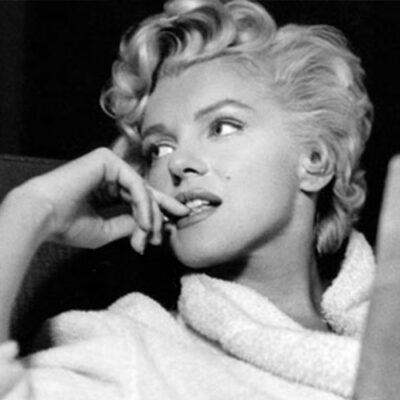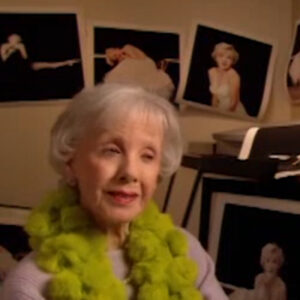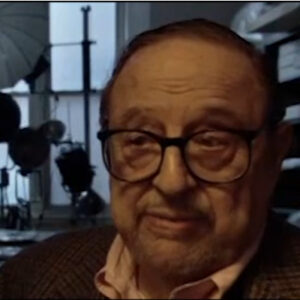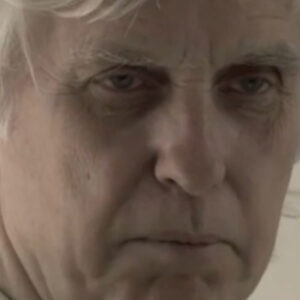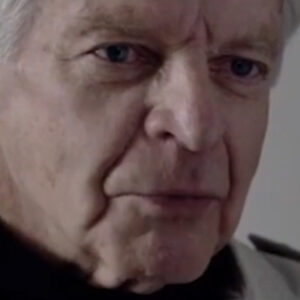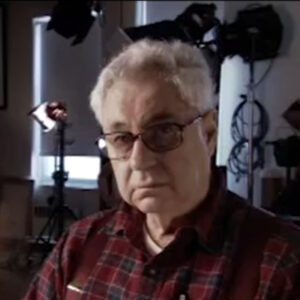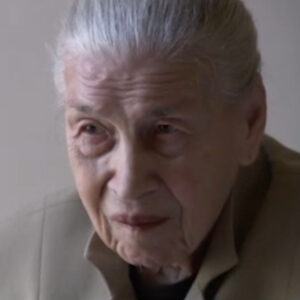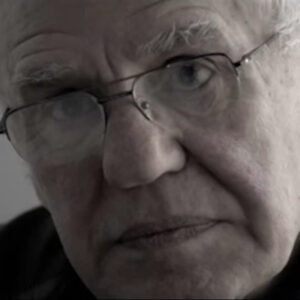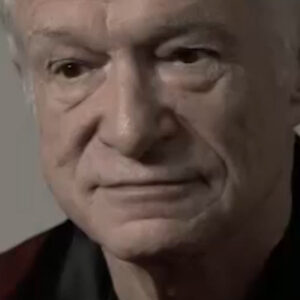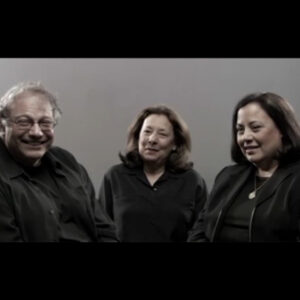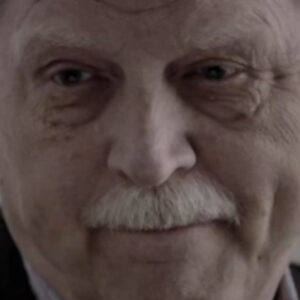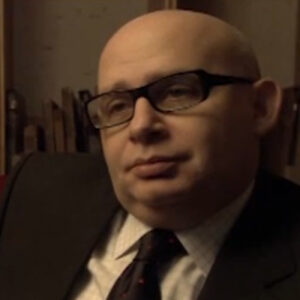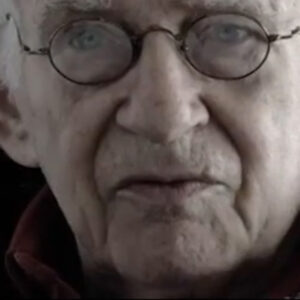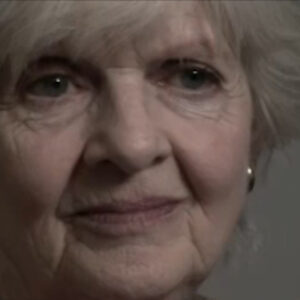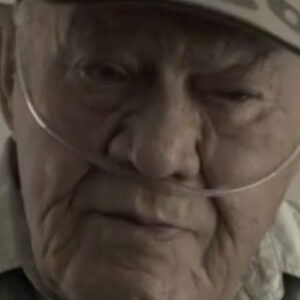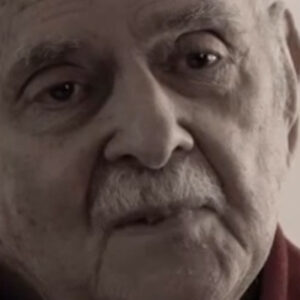Interviewer: Incredible in museums and museum here. You’re looking at both art. The target becomes your trademark personality interpretation. All of the things that go into what? The museum you. I would love to observe your observation.
Diane Chamber: Well, of course, the photography itself is very important to us. And the fact that this particular exhibition captures the creme de la creme of mid century portrait photography. Know all the great masters. Are there some people who weren’t necessarily portrait photographers like Robert Frank and Lisette Mocktail, but it reflects on a kind of photography that doesn’t exist anymore, actually. So that’s important from a museum and an artistic perspective. And then the subject, of course, is fascinating, extremely popular. It’s amazing to me that this American Beauty, this great actress is a fabulous American icon, is still very much known by generations that never were alive when she was when she was performing at. A lot of it has to do with the art that that was created about her, these photographs, paintings by Andy Warhol, et cetera. And the other thing that I’ve thought of as a woman is that Marilyn, I think, was a kind of proto feminist as much as she was a sexual object. And that’s very much reflected in these paintings. If one thinks about her life, how she really tried to be taken as a serious actress, how she dropped a very lucrative Hollywood career, went to New York to study at the Actor’s Studio to improve her skills as an actress. Some of the men that she associated with it were intellectuals and so on. She she definitely wasn’t just a blonde, a bomb, a blonde bombshell. She wanted to be known as someone that was serious. And so all of those issues are something that I think is sort of reflected in the exhibition.
Interviewer: Also allowing you to go back and have you talk about the kind of photography that you see. Doesn’t that we see is not, because one a little subtext for me is going to be mine. Subtext with myself is that sort of photography as we know it is never going to be. Again, we did do a little darker work, which would be part of this film with both I don’t know, I prints some of the racial stuff and the actual printing on paper and the emerging image coming up to me. Well, this is going to be long on. Even on these negatives, but also just the style of it is, I think, to talk about.
Diane Chamber: Yes. Well, in the history of photography, the portrait has always been important. In fact, if one thinks about history of art and the evolution of photography, it initially the main purpose was of photography starting in the mid 19th century was to capture portraits of a rising middle class that came about because of the industrial revolution. And there were there were photographers early on that excited experimental photography. But by and large, the vast majority of photographs taken from the 19th century on were photo portraits and portrait photography, supplanted painted portraiture because who could afford that? Only the nobility, only the wealthy, et cetera, et cetera. So it was very important culturally. And, of course, it evolved initially in France, but it soon spread very one. For the other aspect of photography that’s revealed in this is documentary photography. And that became very important to simultaneously, we think of the Civil War through Matthew Brady’s photographs, for example, these image, these iconic images that are captured by photographers. But what I always tell people that I’m looking at photography with is that it isn’t just. A mechanical process because the eye of the photographer at the selectivity of the photographer is the thing that prevails and makes that particular image. And so that’s true. In this Merrilyn exhibition, even though it’s Marylyn over and over again, it’s so many Marilyns as seen through the eyes of all these wonderful photographers.
Interviewer: So that isn’t that sort of moment of confluence of painting and photography coming together. And Warhol, which takes the gold portrait route. The Newport marries them something else.
Diane Chamber: Yeah. Sex was very important in the 60s with the rise of pop art. The think the art is like Warhol, Rauschenberg and others were very much involved in observing popular imagery and advertising and then incorporating that kind of approach to the figure, the body, the portrait and and recreating it in their art. So you have numerous artists doing that. But Warhol, more than any others, because Warhol himself was a photographer, he incessantly photographed. I actually didn’t know Marilyn, but I did have the privilege of taking Andy Warhol on a tour of our historic district here through the South Beach and the art deco district. And he was continually photographing the whole time. And he he then use those photographs, some he didn’t use. And I love to go and see it’s time capsules and all the things they shot when he was here in 1980, because I took him on all sorts of nooks and crannies and he photographed all the time. But he had that sort of I am the camera approach to his art. And that’s one of the reasons I believed from the beginning that he was a genius, even though, you know, he, at the end of his life wasn’t regarded as highly by the critics as he had been in the early career. That’s all being reviewed and revisited. And and these portrait photographs that he did of so many people are very, very important.
Interviewer: I mean, this also came after her death. So already and not as long after her death is now, this is I mean, already there’s this preponderance of sort of keeping her alive and keeping her alive. The way you feel in this film is when you walk through this exhibit is present. She is still.
Diane Chamber: The vitality of this woman captured in these photographs is something that will never go away. Maryland had the misfortune of dying young, but at the same time she was preserved in the prime of her life and all these photographs. And I was thinking for someone like that, who, you know, Jane Russell is quoted as saying Marilyn was like a flower who bloomed before the photographer. Like no other actress before. Photographers are still photography, not cinematographers. She have this unique ability. And I was thinking that in a way, it you know, it’s sad, her her story. It’s a sad story, after all. But but nevertheless, her beauty. We don’t get to see Marilyn at 80, as we do with some of the actresses that have reached that age that are brave enough to be photographed and talk in programs and be interviewed. And so she’s always in our minds, as in the prime of life.
Interviewer: One wonders if she would have done. Did you ever see that Maximilian Schell film with Marlene Dietrich, who would no longer be anyone who would no longer with what you see on her legs that stay behind?
Diane Chamber: Yeah. And that word writer Garbo, the same thing, these incredible beauties that. But I don’t know. I think one can’t second guess that. But I think Marilyn, because of her desire to be taken seriously as an actress, might not have done that. She wishes she could have become a character actress sample. I mean, I don’t know. That’s that’s a guess.
Interviewer: What do you think you were talking about earlier also? That I think is interesting about generations who never we never had any way of experiencing her. Someone was saying to me in New York and a friend of mine who teaches at the school, Schwartz, what we’re seeing this other guy there starts his course with The Misfits, which is. But he’s teaching still class and that the students have no idea of her in her movies, that their whole take on her, the whole sort of generations now that have come up in the last scene last couple of decades only grew only really from these still images from these from these jurors that have abounded over all this time and not from. They don’t even really know her that way.
Diane Chamber: Well, we’re going to try to correct that during the exhibition by showing most of her films. So to compliment them. And, of course, The Misfits in particular, her last film, Clark Gable’s last film, a film that was fraught with problems because of her physical and mental condition, but nevertheless comes across she comes across in a very strong way in that film and that issue with her defending these wild horses, you know, and thinking it’s so wrong to be doing this, to be recapturing. You know, I I think she identified with that really and truly. But it was very difficult for her to make it.
Interviewer: Do you do you. Does it surprise you at this point that a piece that did a show like this comes into a museum setting, that that an exhibit like this does it? Not at all surprising. She she you walk into this and you actually wish you could see it. You sort of wish that she could know here that here she is.
Diane Chamber: Yes.
Interviewer: And I have always been sort of respectful way, you know, and this sort of past tense and transcendent sort of one in one sense is just such a pop culture to what is really considered art.
Diane Chamber: I don’t think so. I think that when one sets, whether it’s for a photograph or for a portrait, a painted portrait, I think you’re thinking one is thinking all the time about capturing immortality. So I don’t think it would have surprised her. And I think when she was posing, you know, they’re subliminally. Was that you know that. This is me and I’m going to be here forever because of this photograph.
Interviewer: Which was possibly a great desire.
Diane Chamber: A great desire, a great desire. I think it was.
Interviewer: Just about these two paintings, because also the repetition of ways of using her continue among artists today. Also, no experience. No way.
Diane Chamber: Yes, that’s true. These two paintings that you see hanging here by an artist named Sheila Elias, who came here from the West Coast. She she does use popular imagery in her work. And as you can see, Maryland’s portraits, photographs of Marilyn have been incorporated into the painted surface of the work. And that’s an ongoing tradition now. And contemporary art is incorporating photographs and painted pictures. They’re actually made up, but they’re really collages. It’s a lot of different material. She’s incorporated. But I particularly like the one where the stars in Maryland. So I and I didn’t know I know this artist’s work, but I didn’t know about these particular paintings. They’re from the mid 80s. And I hadn’t ever seen them in our studio so many times as I’ve been there. So when she heard about the show, she said, would you like to see my Marilyn paintings? And I said, Oh, yes, let’s see them. And then decided to put them up in the museum simultaneously.
Interviewer: To see seems to be continuing to be. She does the sort of consuming fascination for four artists as well as next generations, even actresses and and also others. Jessica. Sarah Jessica Parker perfume out now. An ad campaign for it is totally Green Valley photographs. She’s known me. Oh, but, you know, I mean, you see her continuing continuing repetition.
Diane Chamber: I think she was the quintessential American beauty.
Interviewer: You see America.
Diane Chamber: I think, very American. And one of the pain, one of the paintings, one of the photographs in the exhibition that I’m drawn to, which was totally posed, I’m sure is Robert Frank photograph at the end? He’s. Oh, yes. I’m sure it was posed. I mean, I think he had it’s a conceptual photograph. I you know, I don’t know. You know, Robert Frank was Swiss. He came to the United States. He toured the United States. And he did this wonderful series of photographs about American life from his perspective. And it was in the 60s. And that’s a critical perspective. And this is a critical perspective, the way the flag is dry. It’s a real flag. It’s not a flag towel on the beach. That’s a 60s thing using the flag and appropriately or desecrating, if you will. I mean, those were issues of the time. And I think it’s a posed photograph. I think he might have seen somebody on the beach reading the paper and said, oh, these headlines are there. And let’s get a flag and let’s do this. The sitter is anonymous. I mean, you’re seeing her from the back and the flag is what’s in the picture is the most the flag in the headlines. So, you know, making the connection between the United States, America and Marilyn, Marilyn was an American Beauty. Also, one of my very yes, Ali said, of course, she was such a fascinating artist. And, you know, that’s a photo montage. And she’s it was surreal. She incorporated all juxtaposed all these unusual things with Marilyn in this photograph and coming at it from a totally different perspective. It’s next to the Warhol, Marilyn and the show, because those are the two that stand as works of art that are not just as photography, not that the photographs are works of art, but works of art that are incorporating other aspects of photography, that are incorporating other aspects of art.
Interviewer: She’s very unlikely to like. She’s a surprising choice. I mean, I was weird.
Diane Chamber: Yes, that’s right. It definitely it definitely was very different. It was Lisa.
Interviewer: Who must be rather.
Diane Chamber: Yes. Actually, I’m not sure about that at all. Yes. She had to be right. And another European came and, you know, had a different take on American society and culture, popular culture.
Interviewer: The other thing I just would like you to comment on is the breadth of this collection and the mind of a collector that we’ve met with early on and more than these guys wanted to see, the more I see it as a museum curator and director. He’s looking at sort of the mind of collectors all the time. Sorceror this. Some of these us did this sort of design.
Diane Chamber: I think it was a very cogent decision to do this because as I mentioned before, just taking focusing this way, taking Merrill in an iconic individual. But, you know, weighing, as I’m sure he must have, that so many very, very major photographers photographed, made it a natural party sort of it and did it. And that’s extraordinary. It was there all the time. But she’s the one that really decided to do it. And I think it’s it’s it’s an amazing accomplishment. I don’t know him, but I’d like to meet him. But I think it was very smart to do this.
Interviewer: I think what you see is that it’s really it’s.
Diane Chamber: It’s powerful to it’s very powerful. And as you say, it’s beautiful. It’s powerful. It’s sad. It’s exuberant. It’s got a whole range of feelings incorporated in these photographs. And again, so many, many very important photographers represent. I mean, why did they go after photographing Marilyn? Of course, she was very much of the time. She was very much in the limelight for relationships with various men, the Kennedys. Cetera. You know, made her very much somebody who people wanted to see up close, but more so the photographers. And they could get up close because she was approachable. That’s the other thing. Very approachable. I mean, when one thinks of some of these other beauties that, you know, they don’t want to be in all kinds of pictures, that photographs she posed, obviously, and and so on, and they worked with her. But there is usually a limit to that.
Interviewer: She also notoriously managed. I mean, she went through those contact sheets. She certainly did this with Brit as we know it.
Diane Chamber: Yes. Yes.
Interviewer: She did what also exists in this collection rather nicely is certainly her early days when she wasn’t doing that so much and was just, I think, wanting to amass photographs like the Deana’s and things like that. But also there are the great journalistic photography and bribery cases, soccer field things, those things. But at the same token, at the same time, she became really savvy about how she has been put, put her image out there. And she was very, very, if not calculated, methodical, I think. And they’re very fastidious in a way about how she wanted to be perceived.
Diane Chamber: I think in terms of her personality and her psychological history, if you will, she gave structure to her own life by doing this, by managing her career, by managing her photography. And I think that’s another mark also of her intelligence. I think she had to have been a very bright person. I don’t think she was just a pretty face. Yes. Oh, yes. Yeah, exactly. It was time consuming. But that was her. That was her. That was her profession. And she took it seriously.

